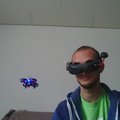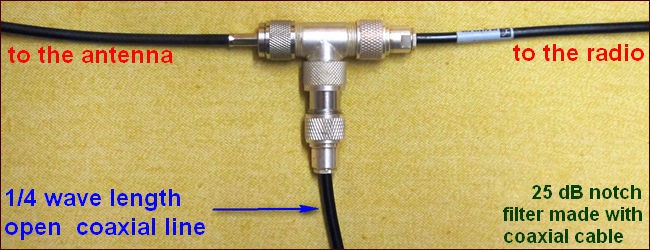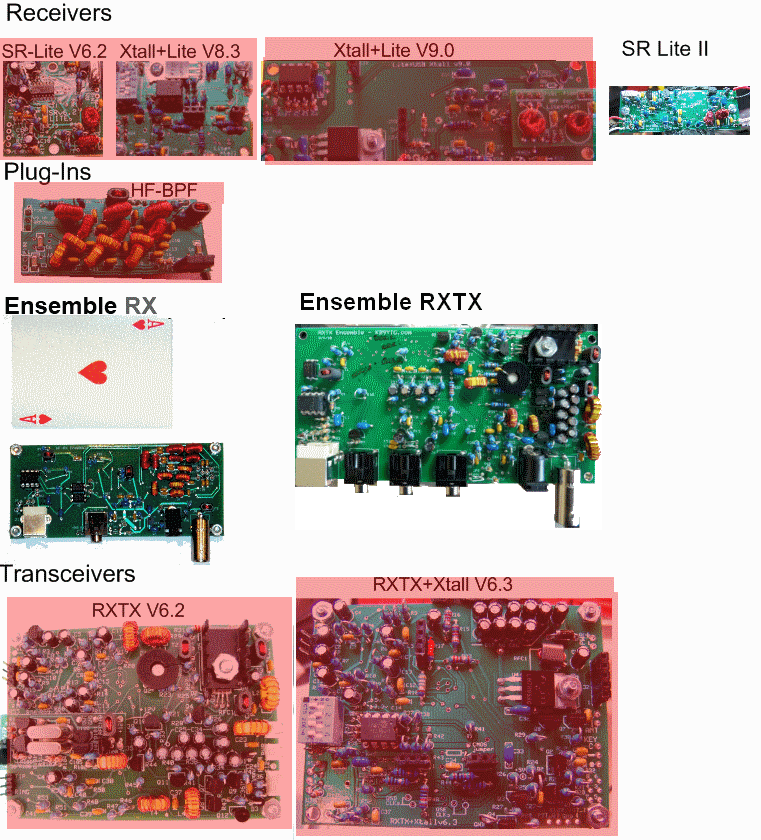![]() Hiya!
Hiya!
 Way more complex when getting into the microwave range. Just watched a Keysight presentation noting how every section of a circuit in a system has to be studied to understand the affect... where I perceive is like an antenna basically so not to cause reflections, impedance mismatches, losses, etc.
Way more complex when getting into the microwave range. Just watched a Keysight presentation noting how every section of a circuit in a system has to be studied to understand the affect... where I perceive is like an antenna basically so not to cause reflections, impedance mismatches, losses, etc.
 Speaking of filters the next one I need is going to be for broadcast AM, I need to get into VLF soon
Speaking of filters the next one I need is going to be for broadcast AM, I need to get into VLF soon
 @James Finch very true, as you go up in frequency even the PCB material can affect the signal/circuit
@James Finch very true, as you go up in frequency even the PCB material can affect the signal/circuit
![]() Well, every part of a RF transmission system has to be matched to achieve optimal performance
Well, every part of a RF transmission system has to be matched to achieve optimal performance

![]() and yeah, it can get tedious quick
and yeah, it can get tedious quick
 @Max-Felix Müller What do you mean software defined antennas?
@Max-Felix Müller What do you mean software defined antennas?
 @Signals Everywhere/KR0SIV Totally, the demonstration was just a via causing the losses around 20GHz.
@Signals Everywhere/KR0SIV Totally, the demonstration was just a via causing the losses around 20GHz.
![]() microwave is really finicky :P
microwave is really finicky :P
 @Max-Felix Müller or I suppose you're asking what antennas to use with your SDR?
@Max-Felix Müller or I suppose you're asking what antennas to use with your SDR?

![]() A lot of it is still magic to me xD
A lot of it is still magic to me xD
 like https://en.wikipedia.org/wiki/Plasma_antenna ?
like https://en.wikipedia.org/wiki/Plasma_antenna ?
 or more beamforming?
or more beamforming?
 Generally you want a tuned antenna if you can, 2m antenna for 2m, L band antenna for L band etc..
Generally you want a tuned antenna if you can, 2m antenna for 2m, L band antenna for L band etc..
However for general reception you could go with a discone antenna
 Or phased-array like radar.
Or phased-array like radar.
 The antenna is the MOST important part of your radio system, doesn't matter if the radio cost $10M if your antenna is crap it's not going to work
The antenna is the MOST important part of your radio system, doesn't matter if the radio cost $10M if your antenna is crap it's not going to work
 I am picking up Spanish AM/FM? stations up around 500 MHz on the RTL_SDR V3? Any idea how it gets mixed in. My Spanish is not good enough to tell which station. In terms of algorithms, it would be nice to have standard ways to identify strong interference sources, frequency drifts, sferics (lightning), and identify stations location and information automatically.
I am picking up Spanish AM/FM? stations up around 500 MHz on the RTL_SDR V3? Any idea how it gets mixed in. My Spanish is not good enough to tell which station. In terms of algorithms, it would be nice to have standard ways to identify strong interference sources, frequency drifts, sferics (lightning), and identify stations location and information automatically.
![]() beamforming is already done by an array of antennas; if you can vary the phases going to the antenna elements; you can "steer" the array electrically
beamforming is already done by an array of antennas; if you can vary the phases going to the antenna elements; you can "steer" the array electrically
 I use a discone on my FlightAware SDR and I find it to be a poor performer. Could be the long and lossy feedline, to be fair.
I use a discone on my FlightAware SDR and I find it to be a poor performer. Could be the long and lossy feedline, to be fair.
 @RichardCollins It could ben a strong harmonic mixing or intermodulating
@RichardCollins It could ben a strong harmonic mixing or intermodulating
 I'd tune around to see if you can find which station it is in the broadcast band
I'd tune around to see if you can find which station it is in the broadcast band
 There must be an FM nearby--very nearby--to get images at 500 MHz.
There must be an FM nearby--very nearby--to get images at 500 MHz.
 then look it up with the FCC to get the location
then look it up with the FCC to get the location
 and power
and power
 While talking antenna questions, I just typed this one up, n00b question incoming:
While talking antenna questions, I just typed this one up, n00b question incoming:
Great chat, thanks for it. Quick question. Wondering what the term is for what I ran in to this past winter.
I had (still use) a cheap 800mhz Yagi antenna and at this point I had it distributed to many (6 or 7?) RTL-SDR v3's all monitoring the same (800mhz) P25p1 system via UniTrunker/DSD. I'm sure this distrib/amp thing was not the best choice but it worked: https://www.amazon.com/gp/product/B002M1EPL0 And this sytem worked for a good long while but sucked in that it was LSM system with UniT and bad quality.
Well this past winter I stood up a TrunkRecorder/TrunkPlayer linux system and moved some of those SDRs to the new linux system. Still monitoring the same system/freqs, no problems at all. Loved the new quality, TR/TP very much wipes the floor with the old system.
The problem occured when I took some of those same SDRs fed from the same antenna and used them to monitor a 700mhz system. Once I did that it started killing the SDRs that had been rock solid on the orig 800mhz system.
Took me a few days to realize the root cause, but now I'm fine. But I'm curious what that was. I imagine it is some Radio Basics 101 thing, but if you or anyone could just give a search term I'd super appreciate it.
 Right @Joyce That's probably going to be the limiting factor in dirt cheap really wide frequency range and bandwidth COTS hackable systems for now, until a high volume produced system that can be hacked openly will bring the price point down or is cost effective to begin with. I'm wondering about the 5G chips and evaluation boards... as much as I am nervous about not being aware enough of the lower latency, back door and interception concerns since from what I understand is developed outside the U.S.
Right @Joyce That's probably going to be the limiting factor in dirt cheap really wide frequency range and bandwidth COTS hackable systems for now, until a high volume produced system that can be hacked openly will bring the price point down or is cost effective to begin with. I'm wondering about the 5G chips and evaluation boards... as much as I am nervous about not being aware enough of the lower latency, back door and interception concerns since from what I understand is developed outside the U.S.
![]() I had been talking about that for the past few days with a few friends
I had been talking about that for the past few days with a few friends
 The FCC site has a geographical search; if you know where you are, search for the 30 km radius around you. I use it to look for interesting signals.
The FCC site has a geographical search; if you know where you are, search for the 30 km radius around you. I use it to look for interesting signals.
![]() To me at least, the mobile phone and its network is like a blackbox
To me at least, the mobile phone and its network is like a blackbox
 @Joyce Right! Once you learn the tricks... it's "eye" opening. Like they even use eye diagrams that literally open with improved performance characteristics.
@Joyce Right! Once you learn the tricks... it's "eye" opening. Like they even use eye diagrams that literally open with improved performance characteristics.
![]() It's hard to understand, and a lot of details are hidden and/or behind NDAs
It's hard to understand, and a lot of details are hidden and/or behind NDAs
 @Dan sounds to me like your antenna wasn't matched SDRs generally have a 50ohm or in the case of cheap eBay units a 75ohm impedance, if you don't match these you'll end up with signal losses and when transitting it's even possible to damange the radio
@Dan sounds to me like your antenna wasn't matched SDRs generally have a 50ohm or in the case of cheap eBay units a 75ohm impedance, if you don't match these you'll end up with signal losses and when transitting it's even possible to damange the radio
![]() Try for example, figuring out how the baseband processor in your phone works
Try for example, figuring out how the baseband processor in your phone works
 I know a French guy on Twitter who works for La SNCF, the railroad. They use a form of GSM for their comms. He's in the telecom dept.
I know a French guy on Twitter who works for La SNCF, the railroad. They use a form of GSM for their comms. He's in the telecom dept.
 I will use those terms to look. This must happen all the time. But the SDR software does not have that neatly package. Likewise SDR radar, meteor tracking, lightning mapping, radio astronomy, direction finding and many other applications of SDRS and SDR arrays.
I will use those terms to look. This must happen all the time. But the SDR software does not have that neatly package. Likewise SDR radar, meteor tracking, lightning mapping, radio astronomy, direction finding and many other applications of SDRS and SDR arrays.
I am mainly worklng with problems that require thousands of detectors globally. Steering those required high sampling rates and 3d reception. (Three axis and tensor sensors)
![]() try getting even the datasheet, the registers details
try getting even the datasheet, the registers details
![]() etc
etc

 OK, here we are at an hour into the Chat, which is where we usually let the host off the hook so he or she can get back to work. If @Signals Everywhere/KR0SIV wants to hang around and keep answering questions, he's more than welcome to. I'll keep monitoring the Chat to make sure I capture all this great stuff for the transcript.
OK, here we are at an hour into the Chat, which is where we usually let the host off the hook so he or she can get back to work. If @Signals Everywhere/KR0SIV wants to hang around and keep answering questions, he's more than welcome to. I'll keep monitoring the Chat to make sure I capture all this great stuff for the transcript.
@Signals Everywhere/KR0SIV - Thank you so much for hosting today. Your enthusiasm is infectious, really has me worked up to improve my SDR game.
 Speaking of direction finding, the KerberoSDR is amazing when paired with the android app for it
Speaking of direction finding, the KerberoSDR is amazing when paired with the android app for it
 @Joyce I agree with you about datasheets and registers. LOL!
@Joyce I agree with you about datasheets and registers. LOL!
![]() Btw, if you join the Discord, we can chat about this and other related topics more ;)
Btw, if you join the Discord, we can chat about this and other related topics more ;)
 Here is the FCC geosearch:
Here is the FCC geosearch:
 Thanks !
Thanks !

https://wireless2.fcc.gov/UlsApp/UlsSearch/searchGeographic.jsp
License Search - Geographic Search
 Thanks @Dan Maloney yeah I'll hang around for a little bit more, if anyone want's to hook up with us down the road after the hack chat we're also on discord https://signalseverywhere.com/discord
Thanks @Dan Maloney yeah I'll hang around for a little bit more, if anyone want's to hook up with us down the road after the hack chat we're also on discord https://signalseverywhere.com/discord
 Yup that FCC Geosearch can do wonders
Yup that FCC Geosearch can do wonders
![]() I've a SDR project of my own that I am still working on
I've a SDR project of my own that I am still working on
 just a few miles up the road I have WKKY a several KW FM station at 104.7 mhz
just a few miles up the road I have WKKY a several KW FM station at 104.7 mhz
 even with a BFM filter a little gets in
even with a BFM filter a little gets in
 and I see it all the way up into the L band
and I see it all the way up into the L band
 Yeah, the KerberosSDR looks nice... glad to see that application.
Yeah, the KerberosSDR looks nice... glad to see that application.
![]() It's a little late on schedule though, thanks to daily work commitments xD
It's a little late on schedule though, thanks to daily work commitments xD
 Okay good stuff. Very possible mismatched ohms. I joined the Discord a bit ago, might f/u there if that's ok. It just seems the issue started when I started using the same Yagi to monitor both a 800mhz and 700mhz system with diff radios. Is that a known basic radio thing, you can't use an antenna to monitor that big of diff freqs at same time? I
Okay good stuff. Very possible mismatched ohms. I joined the Discord a bit ago, might f/u there if that's ok. It just seems the issue started when I started using the same Yagi to monitor both a 800mhz and 700mhz system with diff radios. Is that a known basic radio thing, you can't use an antenna to monitor that big of diff freqs at same time? I
![]() As in: 2 radios, one antenna?
As in: 2 radios, one antenna?
 yes via that splitter I linked,... more than 2
yes via that splitter I linked,... more than 2
 all RX only
all RX only
![]() Then you'll effectively halve the signal power from the antenna
Then you'll effectively halve the signal power from the antenna
 Yup each time you spit it you'll lose 3db if I'm not mistaken ie: half
Yup each time you spit it you'll lose 3db if I'm not mistaken ie: half

![]() Think about how the signal is induced into the antenna, and how the current has to split into 2 paths
Think about how the signal is induced into the antenna, and how the current has to split into 2 paths
 @Max-Felix Müller et.al. I just commented to Andriess Spies wondering about the most cost effective way to tune sections of the TX/RX system.
@Max-Felix Müller et.al. I just commented to Andriess Spies wondering about the most cost effective way to tune sections of the TX/RX system.
 yeah,..vaguely aware of that.... I think its less db loss and more harmonics and the stuff you're talking about now
yeah,..vaguely aware of that.... I think its less db loss and more harmonics and the stuff you're talking about now
 I'll chew it over some more,... thanks for the info
I'll chew it over some more,... thanks for the info
@James Finch interesting, thanks
 Using an RTL-SDR or other SDR and noise generator.
Using an RTL-SDR or other SDR and noise generator.
Here is another link with references in the comments also where @Signals Everywhere/KR0SIV was my hero in exposing signals more on a way cost effective budget (specifically the pan adapter and discrimination tap). https://hackaday.com/2019/07/31/rtl-sdr-seven-years-later/

 @Max-Felix Müller I'm wondering if he or someone else will make an updated video for tuning components or sections of the system.
@Max-Felix Müller I'm wondering if he or someone else will make an updated video for tuning components or sections of the system.
 @James Finch @Max-Felix Müller I am absolutely going to do some videos regarding tuning antennas and filters using SDR and the NanoVNA
@James Finch @Max-Felix Müller I am absolutely going to do some videos regarding tuning antennas and filters using SDR and the NanoVNA
 Just need to sit down and record them
Just need to sit down and record them
 Amazing what old equipment can be hacked into more process able systems. Like... who'd a though you can make an SDR out of an Oscilloscope.
Amazing what old equipment can be hacked into more process able systems. Like... who'd a though you can make an SDR out of an Oscilloscope.
 @James Finch They actually have kits for making low bandwidth soundcard SDRs
@James Finch They actually have kits for making low bandwidth soundcard SDRs

![]() It's an interesting idea, and heck, even your sound card can be used as part of a SDR RX/TX chain
It's an interesting idea, and heck, even your sound card can be used as part of a SDR RX/TX chain

WB5RVZ Software Defined Radio Homepage
This site is devoted to the area of Software Defined Radio (SDR), more specifically, the "Softrock" series of technology sampler kits and the GenesisRadio.Com SDR transceiver. These kits are for working amateur radio HF receivers and transceivers. These kits have provided an economical, relatively risk-free, and exciting entry into the SDR tent.
![]() just need the proper analog frontend
just need the proper analog frontend
 @Signals Everywhere/KR0SIV - +1 on those videos, can't wait. Was actually pricing out a NanoVNA today - about to take the plunge.
@Signals Everywhere/KR0SIV - +1 on those videos, can't wait. Was actually pricing out a NanoVNA today - about to take the plunge.
 Or older systems are way cost effective used and can have a pan adapter and/or discrimination tap ran out to run into an SDR, video or Audio input for way more processing.
Or older systems are way cost effective used and can have a pan adapter and/or discrimination tap ran out to run into an SDR, video or Audio input for way more processing.
 @Max-Felix Müller https://youtube.com/signalseverywhere
@Max-Felix Müller https://youtube.com/signalseverywhere
 @Joyce for sure.
@Joyce for sure.
![]() I was going to mention that, @Signals Everywhere/KR0SIV
I was going to mention that, @Signals Everywhere/KR0SIV
 A somewhat shallow plunge at only $80, but still...
A somewhat shallow plunge at only $80, but still...
 I think I only spent $38 on mine, did the price go up?
I think I only spent $38 on mine, did the price go up?
 $45 for this one https://www.ebay.com/itm/NanoVNA-Vector-Network-Analyzer-HF-VHF-UHF-Antenna-2-8-TFT-Screen-50-900MHz-USA/254342318350?hash=item3b37fbc90e:g:gRwAAOSwgR5dZO-L
$45 for this one https://www.ebay.com/itm/NanoVNA-Vector-Network-Analyzer-HF-VHF-UHF-Antenna-2-8-TFT-Screen-50-900MHz-USA/254342318350?hash=item3b37fbc90e:g:gRwAAOSwgR5dZO-L
 @Signals Everywhere/KR0SIV Looking forward to, that would be awesome. I was amazed what LMR400 and being careful with lengths of the feedline and placement of the RTL-SDR did to the discones performance.
@Signals Everywhere/KR0SIV Looking forward to, that would be awesome. I was amazed what LMR400 and being careful with lengths of the feedline and placement of the RTL-SDR did to the discones performance.
 I saw low-rated knock-offs on Amazon for about $50. Higher rated ones were $80
I saw low-rated knock-offs on Amazon for about $50. Higher rated ones were $80
 for sure, everything affects your signal
for sure, everything affects your signal
 You can actually make notch filters out of LMR400 @James Finch
You can actually make notch filters out of LMR400 @James Finch
![]() hi guys
hi guys
![]() and also matching stubs! :D
and also matching stubs! :D


![]() out of coax
out of coax
![]() i see you are talking about sdr
i see you are talking about sdr
 @Signals Everywhere/KR0SIV Nice!
@Signals Everywhere/KR0SIV Nice!
 Yes, @jmcservv The SDR HackChat was about an hour ago but I'm still hanging around for a bit
Yes, @jmcservv The SDR HackChat was about an hour ago but I'm still hanging around for a bit
 Does the 1/4 wave stub just dead-end in an open circuit?
Does the 1/4 wave stub just dead-end in an open circuit?
 @Dan Maloney Yup, it's just an open length of feedline
@Dan Maloney Yup, it's just an open length of feedline

 Dan Maloney
Dan Maloney

Discussions
Become a Hackaday.io Member
Create an account to leave a comment. Already have an account? Log In.